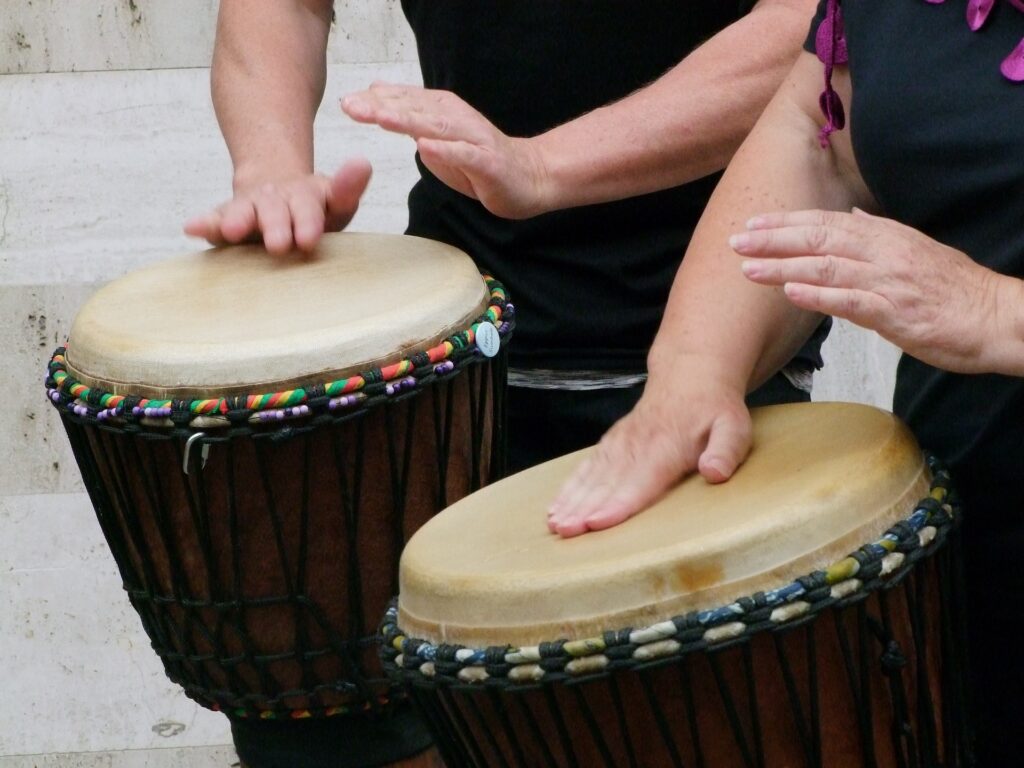Music Psychotherapy

How Music Therapy Works With Cognitive Behaviour Therapy

Music Therapy is being used more commonly to support mental health. Many Certified Music Therapists in Ontario are also Registered Psychotherapists. Music Psychotherapy is a blend of the two professions. It gives clients new and creative ways to engage in therapy. Music Psychotherapy gives therapists a way to combine their skills. For example, using music therapy techniques with cognitive behaviour therapy.
Cognitive Behaviour Therapy (CBT) is a well known and evidenced based approach used to support mental health1. It is the idea that our thoughts, feelings and behaviours are connected and influence each other. For example, when you think a thought, you feel a feeling. Then, you will be more likely to behave in a way that strengthens your thoughts and feelings. Sometimes our thoughts can be unhelpful and cause unpleasant feelings and behaviours so CBT attempts to shift this cycle. When we change the way we think about life’s challenges, we can change our feelings and behaviours.
Concept of Cognitive Behaviour Therapy Explained
Let’s consider an example of improving our physical health. The behaviour piece of this process is straightforward. For example, I want to go for a run every day. The thought piece is also straightforward. Running will improve my cardio, I will burn calories, and increase my endorphins. This will make me feel better and improve my health. However, I have to decide to run. This is where emotions piece can make it tricky. Where my thoughts are the logical part of myself, my emotions can be their illogical counterpoint. Emotions have the ability to sabotage my thoughts. Sometimes in extremely challenging ways. So the reality becomes, I have to feel like deciding to run. Without enough motivation (emotions) the other two pieces just sit in waiting. CBT attempts to shape the feelings and the thoughts so that the desired behaviour can occur.

How can music therapy assist in this CBT process? Music is closely connected to feelings. If you listen to or even just think of your favourite song, it likely fills you with warm fuzzing feelings. Music therapy can tap into our emotions and harness them for wellbeing. The use of the right song can impact feelings like motivation. Active music making can provide a way to explore feelings and thought patterns that can interfere with our desired behaviour changes.
Listening to Music
No one really knows why people love listening to music. Scientists have done many studies to explore the effect music has on our brains. MRI studies have shown that listening to music activates multiple regions in our brain at the same time. Many of these parts of the brain are responsible for our emotions2. When we listen to music that we connect to unpleasant life events, we can experience sadness and happiness at the same time. This can change our thoughts about these life events.
Vocalizing (Toning) and Singing
Toning techniques are singing open vowel sounds. This can increase awareness of breathing and our body sensations, much like meditation. When toning you can feel your voice in your throat through vibrations made in the vocal chords. Also, singing is one of the purest forms of emotional expression. Singing reduces stress and strengthens the immune system3.
“The self is revealed though the sound and characteristics of the voice. The process of finding one’s voice, one’s own sound, is a metaphor for finding one’s self.”
Dr. Diane Austin, Innovator of Vocal Based Music Therapy Techniques
In other words, singing gives clients a way to learn things about themselves. It makes people feel better and is highly effective in shifting our emotions!
Shared Instrumental Experience
Improvisation is where the therapist and client(s) make music together. Sometimes the notes clash and sometimes they sound beautiful but it all just works. This free form of music is ideal even for clients with little to no musical experience. It allows them to express and explore their emotions without talking or thinking. Clients can make music while experiencing strong emotions. The music provides distance and make it feel safer to explore their feelings and ideas. It is possible to explore ideas through music that a client may not be comfortable speaking out loud.
Combining music therapy with traditional CBT provides the therapist and client creative ways to explore the powerful emotional component in CBT. This helps the client get in tune (pardon the pun) with their feelings and find ways to support happiness. This leads to changed thoughts, behaviours and overall wellbeing.
By Heidi Flynn & Charlie MacLeod
References
1 Harris, Stephanie. “Cognitive Behavioural Therapy: Basics and Beyond (2nd Edn.) Judith S. Beck New York: The Guilford Press, 2011. Pp. 391, £34.99 (hb). ISBN: 978-160918-504-6.” Behavioural and cognitive psychotherapy 41.1 (2013): 124–125. Web.
2 Mitterschiffthaler, Martina T. et al. “A Functional MRI study of happy and sad affective states induced by classical music” https://onlinelibrary.wiley.com/doi/full/10.1002/hbm.20337 (2007)
3 Austin, Diane. The Theory and Practice of Vocal Psychotherapy: Songs of the Self. London: Jessica Kingsley Publishers, 2009. Print.
